In This Article
Subscribe to our newsletter
Let's be honest: the old way of making videos, one by one, is completely broken. For today's media teams and publishers, scalable video production isn't just a buzzword—it's the only way to keep up with the relentless demand for fresh content across a dozen different platforms.
This is about a fundamental mindset shift. We need to move away from thinking about video in a linear, project-by-project way. Instead, we need to build dynamic, system-based approaches that let us create more content, faster, and with far greater efficiency.
Why Scalable Video Production Is Non-Negotiable
The pressure to churn out video is immense, and it’s not just about chasing trends. Audiences are spread out everywhere—watching on CTV, scrolling through endless social feeds, and browsing publisher websites. Each platform has its own rules, and viewers expect a constant stream of high-quality, relevant videos.
This new reality has completely shattered traditional production models.
Old-school workflows, where every single video is a handcrafted, time-sucking project, just create expensive bottlenecks. They simply can’t match the speed and volume the market demands today. This isn't just a minor inconvenience; it's a huge strategic disadvantage that limits your reach, engagement, and, ultimately, your revenue.
Shifting From More to Smarter
The real goal of scalable video production isn't just to make more videos. It's about producing them smarter. The magic happens when you start creating adaptable, component-based content that can be programmatically assembled, targeted, and deployed across multiple channels with almost no manual work.
Think about it like this: instead of a team spending a week on one 90-second video, a scalable system can generate hundreds of variations from a single set of assets in a fraction of the time. This could mean:
- Automatically creating different aspect ratios for YouTube, TikTok, and Instagram Stories.
- Running A/B tests on calls-to-action with varied text overlays.
- Spinning up localized versions with different languages or regional data.
- Delivering personalized videos tailored to specific user segments.
The efficiency gains here are not small. They're game-changing.
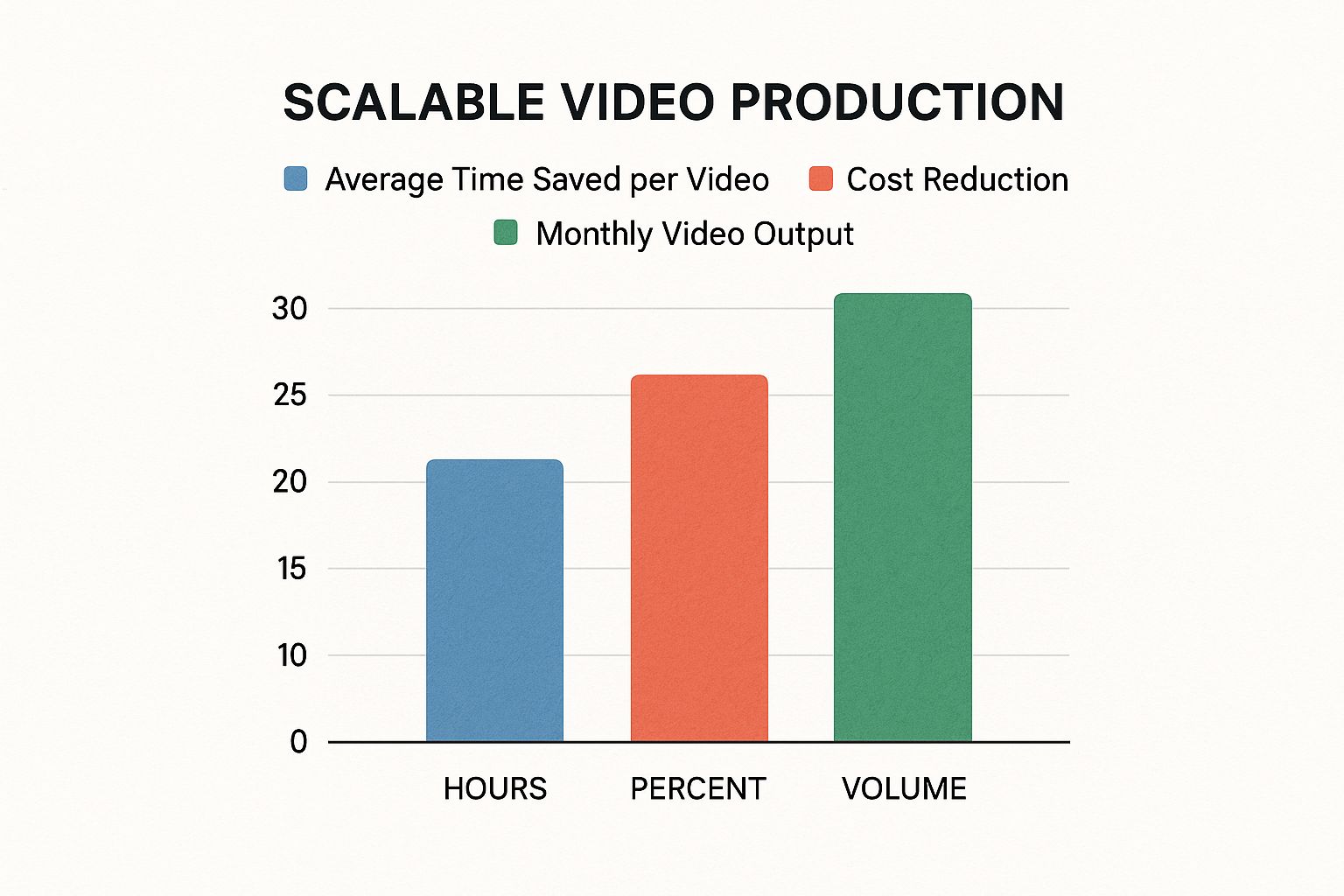
The data speaks for itself. Teams that make this shift save a massive amount of time on each video, slash their costs, and can multiply their content output.
To put this in perspective, here's a direct comparison of the old way versus the new.
Traditional vs. Scalable Production Models
This table breaks down the core differences between the outdated, linear approach and a modern, scalable framework.
| Characteristic | Traditional Production | Scalable Production |
|---|---|---|
| Core Concept | Project-based, one-off creations | System-based, template-driven automation |
| Team Role | Hands-on execution for every video | Strategic oversight of an automated system |
| Output | One video per project | Hundreds of variations from a single set of assets |
| Speed | Slow, manual, and resource-intensive | Rapid, programmatic, and highly efficient |
| Cost | High cost per video, poor ROI | Low cost per video, high ROI |
| Adaptability | Rigid, difficult to modify for new platforms | Flexible, easily adapted for different channels |
| Personalization | Generic, one-size-fits-all approach | Highly targeted and personalized at scale |
The takeaway is clear: one model is a dead end, while the other is built for the future of media.
The Driving Force of Market Demand
This isn't just an internal operational shift; it's a direct response to where the money is going. Video's dominance in advertising is undeniable. The digital video ad market is on track to command nearly 60% of all U.S. TV and video ad spending by 2025—a massive leap from just 29% in 2020.
This explosive growth shows just how much advertisers believe in video's power to target and engage audiences. It's a level of demand that can only be met with scalable production. You can dig into the full analysis in the 2025 IAB Digital Video Ad Spend Report.
The fundamental challenge has changed. It's no longer about if you should do video, but how you can produce it at the scale and speed the market demands without sacrificing quality or burning out your team.
This is exactly where AI and automation come into play. They are the essential tools that make this new reality possible. Platforms like Aeon provide the technological backbone to build this new model, transforming content teams from hands-on laborers into strategic conductors of an automated video engine.
And this guide is your blueprint for building that engine.
Building Your Scalable Production Engine
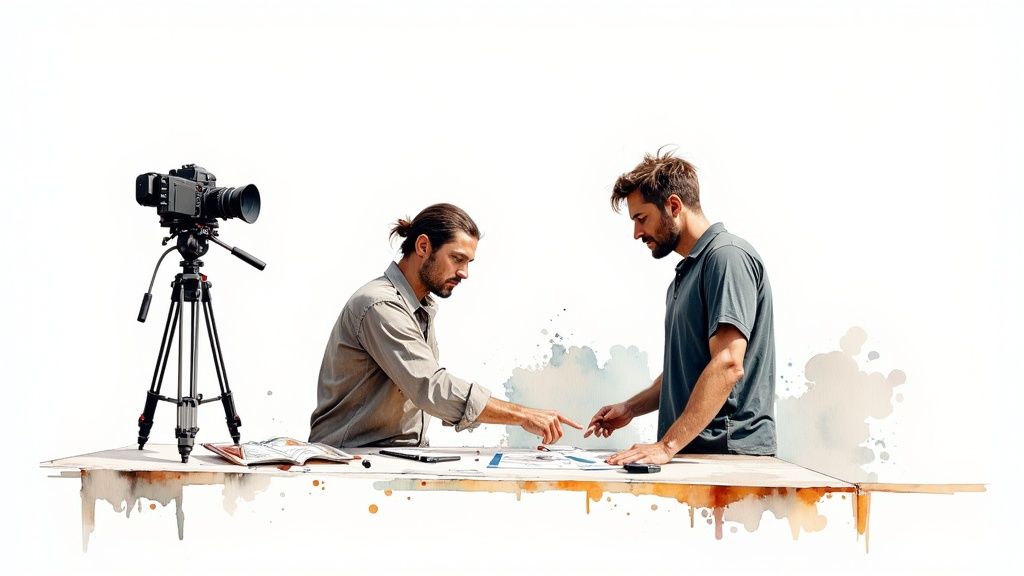
Let's be clear: moving to scalable video production isn't about just buying a new piece of software. It's a fundamental shift in how you think about your entire content library. This is about building a powerful engine before you ever hit the "go" button, so your team feels empowered, not buried under a pile of new processes.
Getting this foundation right is what separates a few lucky viral hits from a sustainable, high-volume video strategy.
First things first, you need to conduct a thorough audit of your existing assets. I guarantee your organization is sitting on a goldmine of raw material that’s perfect for being programmatically turned into video. This isn't just about your top-performing blog posts; you have to look at everything with a new, video-first lens.
Start by digging into your high-value, evergreen articles. A well-researched guide or a popular listicle is an obvious, perfect candidate. But don't stop there. Expand your search to include data reports, case studies, customer testimonials, and even your archives of high-quality product photography. Every single one of these is a potential video just waiting to happen.
Define Your Brand's Automated Identity
Once you know what you’ve got, you need to establish the rules of the road for your automated system. Think of this as creating the guardrails that ensure every AI-generated video still feels uniquely yours. If you skip this step, you risk churning out generic, off-brand content that will slowly erode the trust you've built with your audience.
Your goal here is to build a comprehensive brand kit designed specifically for video. This goes way beyond just a logo and a color palette. You need to think about the specific rules a machine can actually follow:
- Font Hierarchy: Define the exact fonts, sizes, and weights for main titles, subtitles, and body text overlays.
- Color Usage: Specify your primary and secondary colors and, more importantly, create rules for how they're used. For example, "Always use color A for title cards, and color B for highlighting quotes."
- Logo Placement: Determine the precise location, size, and even opacity for your watermark or logo across different aspect ratios (like 16:9 for YouTube and 9:16 for Reels).
- Pacing and Tone: Set clear guidelines for the desired pace. Are you aiming for fast-paced, energetic videos for social media, or something more calm and measured for educational content?
This detailed framework becomes the instruction manual for your AI. It’s what gives you creative control even when the production process is completely automated.
The core principle of scalable video production is simple: standardize the container so you can vary the content. Your brand guidelines and templates are the container, giving you the freedom to plug in endless content variations without ever sacrificing quality or consistency.
Architecting Your Video Templates
With your brand rules locked in, you can start building out your master video templates. These are the reusable blueprints that an AI platform like Aeon will use to assemble your videos. You don’t need to create hundreds of them to get started. In fact, it's better to begin with just a few versatile formats that directly align with your main content goals.
I'd suggest creating a few key templates to kick things off:
- The Article-to-Video Summary: This template is designed to pull key sentences and images directly from a blog post to create a concise, 60-second summary video. It's a workhorse.
- The Data Highlight: A template built specifically for visualizing statistics. It uses animated numbers and charts to bring a dense data report to life in an engaging way.
- The Quote Spotlight: This is a simple but elegant template for showcasing a powerful quote or a customer testimonial. It's perfect for creating quick, shareable social media assets.
Each template needs to be built with designated "slots" for variable content—a text slot for the headline, an image slot for the main visual, a data slot for a number, and so on. This modular design is the key to true automation.
For instance, you could feed a spreadsheet with 50 customer testimonials into your "Quote Spotlight" template and generate 50 unique, on-brand videos in minutes, not days.
Choosing the Right Technology Partner
Finally, you need to select the technology that brings this whole engine to life. Look for platforms that are built with API-first principles. A strong API (Application Programming Interface) is what lets you connect the video creation platform directly to your existing systems, like your Content Management System (CMS).
Imagine a workflow where the moment you publish a new article on your website, a companion video is automatically triggered for creation. That’s the real power of a good API. By building this kind of interconnected system, you're not just adopting a new tool; you're creating a self-sustaining content ecosystem that fuels growth with almost no manual effort. This is the cornerstone of a truly modern, scalable video production strategy.
Putting AI to Work in Your Video Workflow
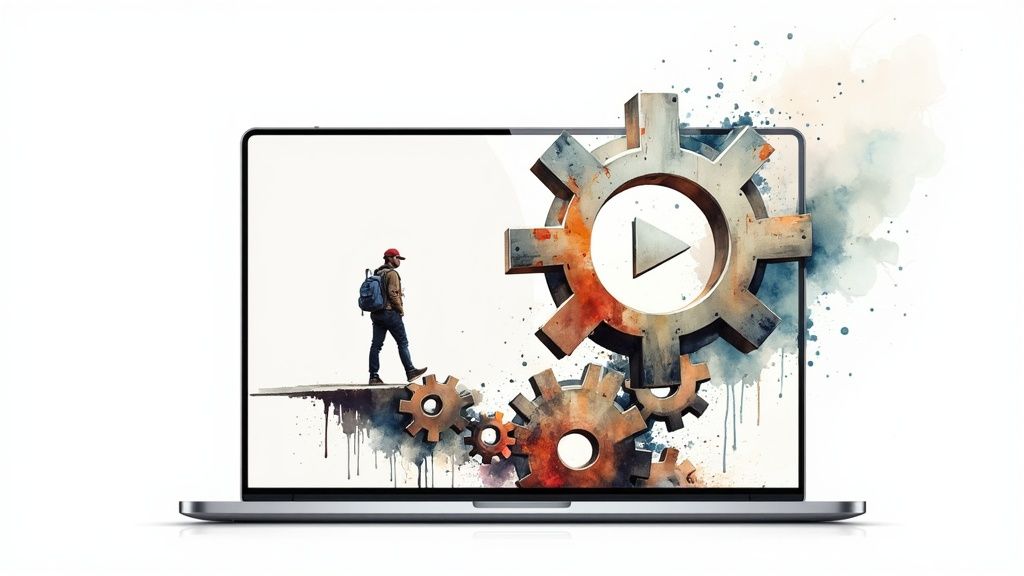
This is where all that talk about strategy and systems meets the real world. We've built the engine; now it's time to add the fuel. And that fuel is artificial intelligence.
When you bring AI into your workflow, you unlock true scalable video production. It’s the moment your team stops getting bogged down in repetitive, manual tasks and starts focusing on high-level creative direction. You let the machine handle the grunt work so your people can bring the big ideas to life.
It all starts with your existing content. Think about that dense, 2,000-word case study your team poured hours into. With an AI-driven platform, you feed it that content, and within moments, the system has analyzed the core narrative, pulled the most impactful quotes, and drafted a concise video script built for engagement.
This isn't just a time-saver. It's a complete shift in how you repurpose content. That blog post is no longer just a blog post; it's the direct source material for a powerful new video asset.
From Text to Visual Storyboard, Automatically
Once the script is ready, you hit the next major hurdle: visualization. In a traditional setup, this is where a producer or editor sinks hours into brainstorming shots and building a storyboard from scratch. AI flips that entire process on its head.
An intelligent platform doesn't just sit there waiting for instructions. It reads the script and starts suggesting relevant visuals on its own. It's a symphony of automated tasks working together:
- Scene Recognition: The AI first breaks the script down into logical scenes or beats.
- Keyword Extraction: It then pinpoints key terms in each scene, like "data analysis," "team collaboration," or "revenue growth."
- Asset Matching: Finally, the system dives into integrated libraries of licensed stock footage, images, and animations to find media that fits both the keywords and the overall tone.
What you get is a complete first-draft storyboard, assembled in minutes instead of days. Your team's role immediately changes from creator to curator. They're no longer digging through a digital haystack; they're refining a hand-picked selection of quality assets and making the strategic choices that will make the story shine.
The Magic of AI-Generated Audio
Audio production is another infamous bottleneck. Finding the right voiceover artist, booking studio time, and editing the audio can easily add weeks to a project. For scalable video production, AI-generated voiceovers are a massive leap forward.
Modern text-to-speech (TTS) is a world away from the robotic voices of the past. Today's AI can produce incredibly human-like narration in different languages, accents, and emotional registers. You can generate a crisp, professional voice for a corporate video and a warm, conversational one for a social media clip—all from the same text.
This is an absolute game-changer for localization. Need to spin up versions of a video for Spanish, German, and French audiences? What used to be a logistical nightmare is now a simple step in your workflow. This kind of agility lets you connect with global audiences faster and more efficiently than ever before.
To get a better sense of how these technologies are reshaping the field, you can explore the role of Generative AI in video production and its specific impact on creating interactive content.
Your team's role is no longer to be hands-on editors for every single frame and audio clip. They become strategic conductors of an automated orchestra, ensuring every instrument—script, visuals, and audio—plays in perfect harmony with your brand's vision.
A Real-World Automation Scenario
Let's make this tangible. Your marketing team just published a detailed guide on the company blog. The goal: turn it into a punchy, 90-second promotional video for LinkedIn.
- Script Generation: The AI platform ingests the article's URL, instantly summarizing the key takeaways into a tight video script.
- Visual Assembly: It then pulls relevant B-roll footage and branded graphic templates that align with the script's story.
- Voiceover Creation: A professional-sounding AI voiceover is generated in your chosen style.
- Music Selection: The system even adds licensed, royalty-free background music that matches the energetic pace you're going for.
In under an hour, you have a high-quality video draft ready for review. The manual effort is almost zero, freeing your team to focus on what matters—like A/B testing different calls-to-action for the LinkedIn campaign.
The trend is undeniable. 91% of marketers now see video as a core part of their strategy, and with over 40% planning to integrate AI tools, the industry is accelerating toward automation. These platforms are the key to making video production faster and more cost-effective.
For a deeper dive into the tools making this possible, our guide on AI video creation platforms breaks down the top options and how to choose the right one for your team.
This is how you transform your content engine from a manual assembly line into an automated powerhouse.
Automating Video Versions for Every Platform
Making a great video is a solid win. But in today's media world, the real test is turning that one great video into hundreds of perfectly optimized versions for every channel you're on—without completely overwhelming your team. This is the heart of scalable video production: smart, multi-platform distribution.
The secret isn't working harder; it's working smarter by designing 'master' video templates. Think of these not as rigid, one-off designs, but as flexible blueprints that an automated system can instantly resize, reformat, and repurpose. This shift takes you from a painful, manual slog to an efficient, programmatic workflow.
From One Master to Many Variations
The core concept is simple. You build a single, high-quality "master" asset, and then you let an AI-driven platform like Aeon do the heavy lifting. The system can take your standard 16:9 video destined for YouTube and, in a flash, generate a 9:16 version for TikTok, a 1:1 square for an Instagram feed, and a 4:5 vertical for a Facebook ad.
But this is about more than just cropping a video. True scalability comes from creating strategic variations that speak to each platform's unique audience and algorithm.
This could mean:
- Custom Text Overlays: Automatically swapping in different headlines or key takeaways for different audiences.
- Platform-Specific CTAs: Adding a "Swipe Up" call-to-action for Instagram Stories but a "Click the Link" for YouTube descriptions.
- Variable Music Tracks: Using a punchy, trending audio clip for TikTok while sticking to a more professional track for a LinkedIn video.
This isn't about pumping out lower-quality content. It's about respecting each platform's culture while keeping your brand identity locked down.
The goal is to be everywhere, effectively. You get there by building a system that honors the specific rules and expectations of each channel, making sure your content feels native and welcome wherever it lands.
The data backs this up. While traditional HD 1080p is still a workhorse, the explosion of mobile-first viewing has changed the game. Recent data shows vertical HD (1080x1920) video consumption shot up by 51% year-over-year, thanks to platforms like TikTok and Reels. You can explore more video marketing statistics in this 2025 report to see just how critical multi-format delivery has become.
A Sports Highlight Scenario
Let's make this real. Imagine you're a sports media publisher who just captured a fantastic, game-winning touchdown. With a scalable production system, that single highlight becomes the source for an entire content campaign.
First, you have the core asset: the raw 30-second clip of the play.
Next, you feed this clip into your AI platform. Using pre-built templates, it generates multiple versions almost instantly.
Here’s what that quick turnaround might produce:
| Platform | Format & Length | Content Focus |
|---|---|---|
| YouTube | 16:9, 3-5 minutes | A detailed breakdown of the play with slow-motion replays, animated graphics showing player routes, and expert commentary. |
| 1:1, 60 seconds | A clip focused on the teamwork and leadership behind the play, with text overlays highlighting professional takeaways. | |
| TikTok | 9:16, 15 seconds | Just the most exciting part of the play, set to trending audio with quick cuts and bold on-screen text to grab attention fast. |
| 4:5, 45 seconds | A carousel post that combines the highlight with player stats and a compelling caption that drives traffic to the full YouTube video. |
From one clip, you've created four distinct pieces of content, each perfectly tailored to its platform. A traditional team could spend days on this. With automation, it happens in minutes. This approach is absolutely central to any strategy aimed at boosting growth with automated content production, because it ensures you squeeze every drop of value out of your creative assets.
Using Data to Fuel Your Video Strategy
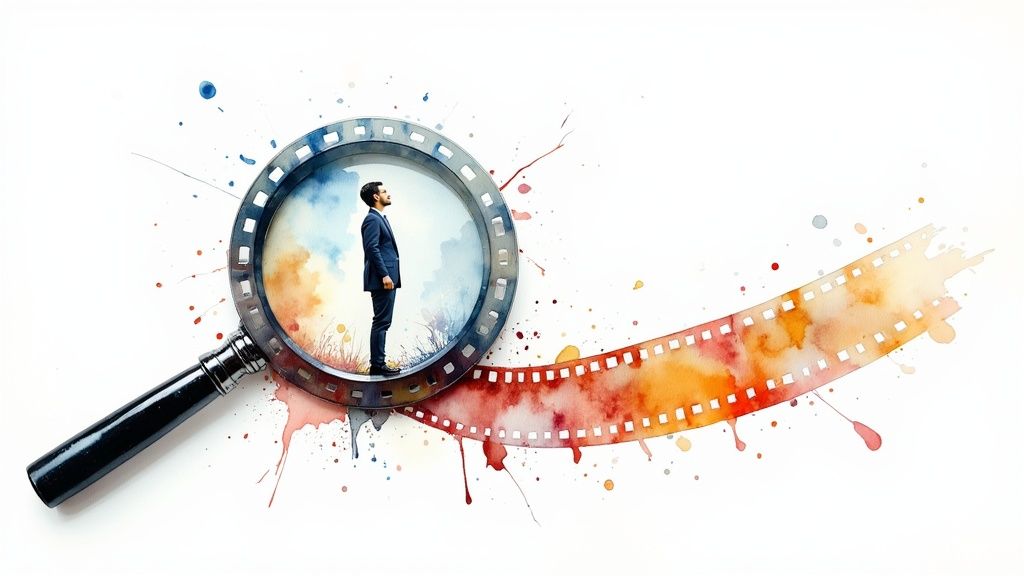
Pushing out a high volume of videos is a great start, but it's really only half the job. The real magic in scalable video production happens when you start feeding performance data back into your creation process. This creates a powerful feedback loop, turning your content engine from a simple assembly line into a smart system that improves with every single video you publish.
It's time to get past vanity metrics like total views. If you want to build a strategy that lasts, you have to dig into the key performance indicators (KPIs) that tell you what your audience is actually doing and how it impacts your business. It’s all about measuring what truly matters.
This data-first mindset is the secret to getting better over time. When you know exactly how your audience interacts with your videos, you can make sharp, informed decisions that directly improve performance, engagement, and your bottom line.
Pinpointing Your Most Impactful KPIs
To make your data work for you, the first thing to do is figure out which metrics actually give you real insight. Let's be honest, generic view counts are often fool's gold—they don't tell you a thing about content quality or whether you've made a connection with the viewer.
Instead, zero in on the numbers that reflect genuine engagement. Your core KPI dashboard should absolutely include:
- Audience Retention & Drop-off Points: This is the big one. Knowing the exact second you lose a viewer's interest is gold. It points directly to weak spots in your videos, letting you fine-tune your templates and storytelling.
- Engagement Rate by Platform: Don't just lump everything together. Track likes, comments, shares, and saves relative to views on each channel. A video that pops on TikTok but flops on LinkedIn is telling you something important about your strategy.
- Click-Through Rate (CTR) on CTAs: How many people are actually clicking on your calls-to-action? A low CTR is a clear signal that your offer isn't hitting the mark or your CTA is in the wrong spot.
- Conversion Rates from Video: Take it one step further. Of the people who clicked, how many actually followed through? Did they sign up for the newsletter? Did they buy the product? This is where video ties directly to revenue.
By focusing on these specific KPIs, you shift from simply creating content to strategically engineering it for performance. Every data point becomes a clue for how to make the next batch of videos even better.
Building an Automated Analytics Framework
Once you have your KPIs, the next move is to build a system that pipes this performance data right back into your production workflow. This is where a platform like Aeon really shines, because it can link your analytics directly to your video templates. You’re essentially creating a fully automated feedback loop.
Think about it. Your analytics might show that videos under 45 seconds consistently get more shares on Instagram. With an automated setup, you can configure your system to automatically prioritize that shorter format for that specific channel.
Or maybe the data reveals a certain text overlay style drives a 20% higher CTR. That style can instantly become the new default for all upcoming videos.
This closes the gap between performance and production. You’re no longer guessing; your content strategy is guided by cold, hard data, adapting in near real-time to what your audience is telling you they want. To effectively use your video data for these kinds of strategic decisions, it's critical to know how to turn data into actionable insights.
Tapping into Live Data for Real-Time Content
Ready for the next level? The most advanced version of data-driven video uses live data feeds to automatically trigger video creation in real-time. This is the peak of scalable video production, transforming your content engine into a responsive, autonomous machine.
Imagine these scenarios:
- E-commerce: A live product feed triggers a new video the moment an item's price drops or it comes back in stock.
- Sports Media: A live sports data feed automatically generates a highlight video with final scores and key stats the instant a game ends.
- Financial News: Market data feeds kick off the creation of videos that summarize the day's stock performance for specific sectors.
This isn't just about scaling production—it's about making your content incredibly timely and relevant, grabbing audience attention when it matters most. For a deeper look at how analytics fuels these advanced strategies, you might want to explore more about data analytics for marketers and how to transform your strategy. This is how you build a video strategy that doesn’t just keep up—it stays ahead.
Of course. Here is the rewritten section, designed to sound like an experienced human expert, following all your specified requirements.
Got Questions About AI Video Production? You're Not Alone.
Let’s be honest. Adopting any new system, especially one with "AI" in the name, is going to bring up some serious questions and a healthy bit of skepticism. When I talk with media teams about scalable video production, I hear the same worries time and again. They're concerned about losing creative control or, worse, damaging the quality they've spent years building.
These are valid fears, so let's tackle them head-on.
"Will This Hurt Our Brand Quality?"
This is always the first question, and for good reason. Your brand's look and feel are everything. But here’s a shift in perspective I encourage teams to make: think of a platform like Aeon not as a replacement for your creative team, but as the most powerful assistant they've ever had.
The goal isn't to have a robot make your videos. It's to automate the soul-crushing, repetitive tasks that burn out your best people. Think about all the time spent on:
- Resizing a master video for 10 different social platforms.
- Creating 50 variations for an A/B test.
- Manually pulling assets and clips for a rough cut.
By handing that grunt work over to an automated system, you free up your creative experts. Suddenly, they have the bandwidth to focus on what actually matters—high-level strategy, innovative concepts, and the nuanced storytelling that only a human can deliver.
A well-configured scalable system is your ultimate brand guardian. It operates within strict brand templates and pulls from curated, high-quality asset libraries. This means every video—whether it's your first or five-hundredth—is perfectly on-brand, every single time.
What’s the Real Cost and ROI on This?
Okay, so what’s this actually going to cost, and what’s the real return? It's a fair question. The upfront investment can look very different depending on your needs. You might start with a straightforward SaaS platform for a predictable monthly fee. Or, you could go bigger and build out a custom, API-driven solution that plugs directly into your existing CMS and data feeds.
The return on that investment, however, is where things get really exciting. It shows up in a few key ways:
- Drastic Cost Reduction: You’ll see your cost-per-video plummet. The manual hours needed for each asset practically disappear.
- Massive Output Increase: More content means more traffic, more engagement, and more chances to convert viewers across every channel. It’s a numbers game, and now you can play it at a whole new level.
- Unprecedented Speed-to-Market: Imagine reacting to a trending topic or a new data report in hours, not days. You can get relevant content to your audience while the conversation is still happening.
But maybe the biggest win is the ability to test and learn at a scale you could only dream of before. You can finally stop guessing and start knowing what actually works, optimizing your video strategy with real-world data. Most teams I've worked with find the efficiency gains alone are enough to deliver a clear and compelling ROI within the first year.
How Technical Does My Team Need to Be?
The phrase "AI-driven platform" can sound pretty intimidating. I get it. It conjures images of developers huddled around terminals writing complex code. But you'll be pleasantly surprised.
Modern AI video platforms are built for marketers and creatives, not engineers. If your team can handle a social media scheduler or a modern CMS, they've got this. The interfaces are typically web-based and intuitive, designed for managing templates, kicking off automated production runs, and reviewing content.
Sure, you might need a bit of developer help for the initial setup if you're doing a complex API integration with your internal systems. But the day-to-day operations? That’s all handled by your content team. The focus stays right where it should be: on creative strategy, not on writing code. This is how you truly empower your team to take full advantage of automation—without the technical roadblocks.
Ready to see how AI can transform your content strategy without sacrificing quality? Discover how Aeon provides the tools to build your own scalable video engine, empowering your team to create more, faster. Start your journey with Aeon today.
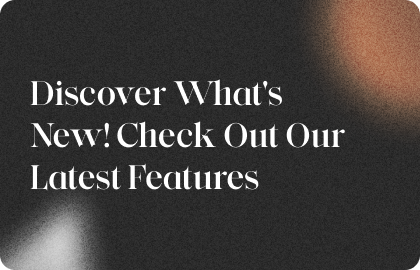

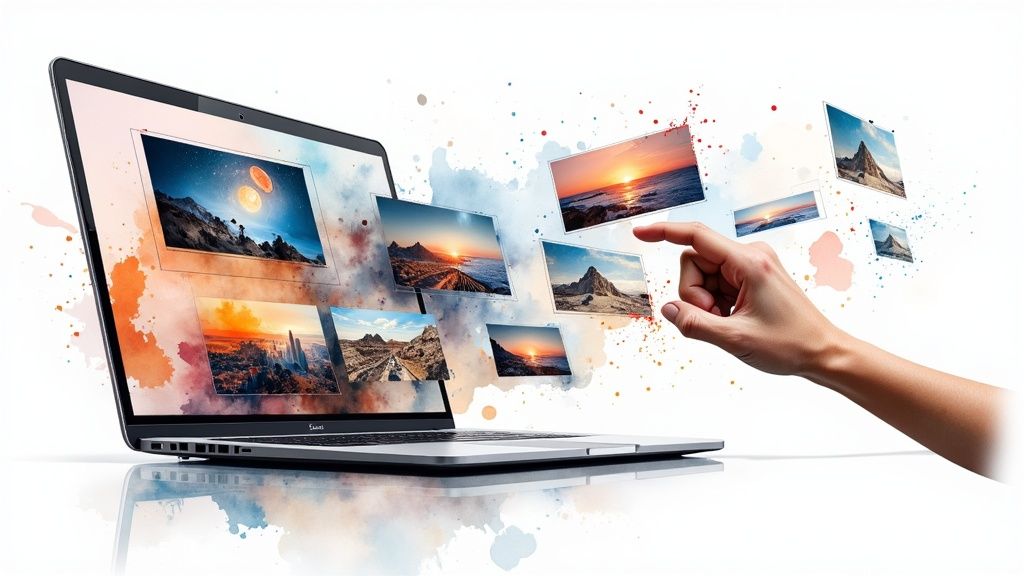


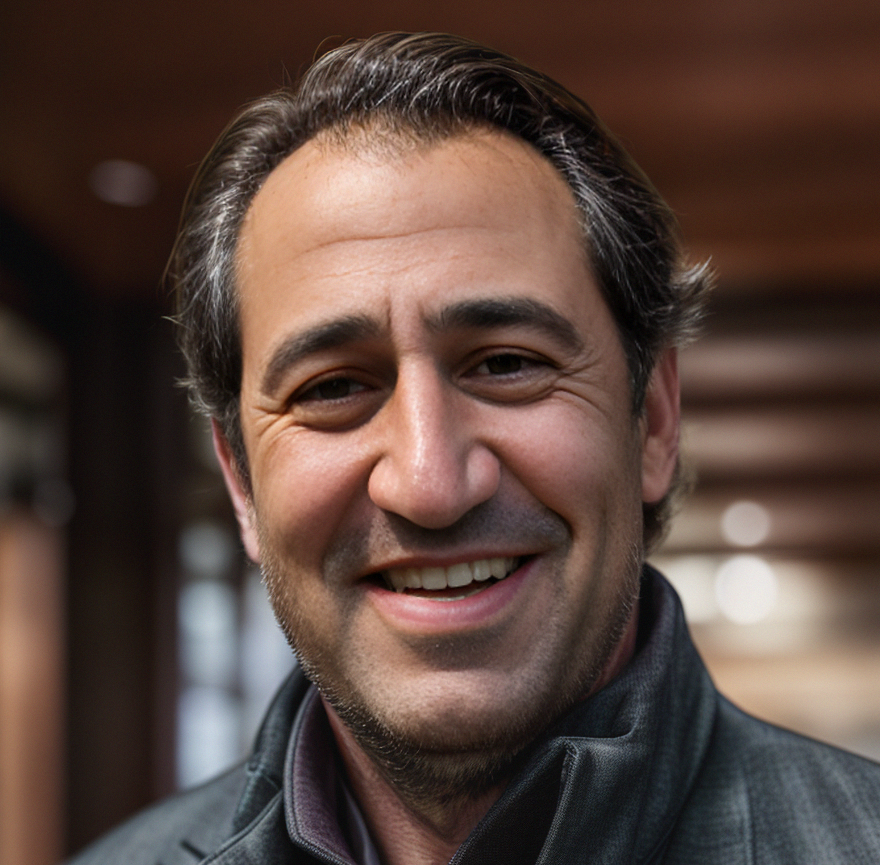
.jpg)